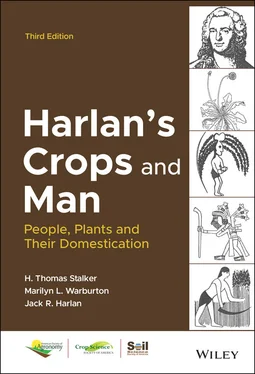Table 1.3 A short list of genera that include one or more species harvested for food by native Australia. a
| Acacia (Af, Am, As)+ |
Lepidium (Am, Af, As, E)+ |
| Adansonia (Af, As)+ |
Linum (As, E)+ |
| Aleurites (As, 0)+ |
Loranthus |
| Alocasia (As, 0)+ |
Lucuma (Am)+ |
| Amamnthus (Am, As, Af)+ |
Luffa (As)+ |
| Amorphophallus (Af. As, 0)+ |
Lycium (Af) |
| Antidesma (As) |
Macadamia (#) |
| Araucana (Am, O, #) |
Manikara (Af) |
| Austromyrtus |
Marsilia |
| Boerhaavia (Af, Am, As) |
Mimusops (Af, As) |
| Bowenia |
Mucuna (As)+ |
| Calamus |
Musa (As, 0)+ |
| Canavalia (Af, Am, As)+ |
Nasturtium (As)+ |
| Capparis (Af, As)+ |
Nelumbium (Af, As)+ |
| Carissa (Af) |
Nymphaea (Am, Af, As)+ |
| Cassia (Af, As, O) |
Ocimum (Af, As)+ |
| Chenopodium (Am, Af, As)+ |
Oryza (Am, Af, As, O) |
| Citrus (As, O)+ |
Oxalis (Am, Af, As)+ |
| Clerodendrum (Af) |
Pandanus (As, O)+ |
| Cordia (Af, As) |
Panicum (Am, Af, As, E)+ |
| Cucumis (As, Af)+ |
Parinari (Af) |
| Cyperus (Am, Af. As) |
Phragmites (Af, Am, As, E, O) |
| Dactyloctenium (Af) |
Physalis (Am, Af, As, E)+ |
| Digitaria (Af, As, E)+ |
Piper (Am, Af, As, O)+ |
| Dioscorea (Am, Af. As)+ |
Podocarpus (Af, As, O)+ |
| Diospyros (Am. As, O)+ |
Polygonum (Am, Af, As. E, O) |
| Dolichos (Af. As. O)+ |
Portulaca (Am, Af. As, E)+ |
| Eleocharis (Am. Af, As)+ |
Rubus (Am, Af, As, E)+ |
| Eleagnus (As, E)+ |
Rumex (Am. Af, As, E) |
| Eleusine (Af. As)+ |
Sambucus (Am, Af. As, E)+ |
| Eragrostis (Am, Af)+ |
Sesbania (Am, Af. As)+ |
| Eriochloa (Af, As)+ |
Solanum (Am, Af, As, E, O)+ |
| Eucalyptus (#) |
Sorghum (Af, As)+ |
| Eugenia (Af, As, O)+ |
Spondias (Am, Af, As, O)+ |
| Ficus (Am, Af, As, O)+ |
Sporobolus (Am, Af) |
| Gardnia (Af, As, O)+ |
Tacca (Ac, O)+ |
| Gastrodia |
Terminalia (As, O)+ |
| Geranium (Am, As, E)+ |
Trigonella (As)+ |
| Glycine (As, O)+ |
Typha (Am, Af, As, E, O)+ |
| Grewia (Af, As. O) |
Vigna (Af, As, O)+ |
| Haemadorum |
Vitex (Am, Af, As, O)+ |
| Hibiscus (Am, Af, As, O)+ |
Vitis (Am, As, E)+ |
| Ipomoea (Am, Af, As, O)+ |
Zamia (O) |
| Lagemyia (Am, Af, As, O)+ |
Zizyphus (Af, As)+ |
aAbbreviations in parentheses indicate species harvested in the wild in addition to Australia: Am = America, Af = Africa, As = Asia, E = Europe, O= Oceania, # = modern domestication, + = one or more cultivated species somewhere in the world, but not in Australia.
It is not surprising, therefore, to find independent domestications of different species of the same genus, and if the genus is widespread, the different domesticates may have originated in different continents. Examples of such vicarious domestications occur in the following genera, among others:
1 Mesoamerica and South America—Amaranthus, Annona, Canavalia, Capsicum, Carica, Chenopodium, Cucurbita, Gossypium, Opuntia, Pachyrrhizus, Phaseolus, and Physalis;
2 Africa and Asia—Amorphophallus, Cucumis, Digitaria, Dioscorea, Dolichos, Hibiscus, Oryza, Piper, Solanum, and Vigna;
3 Old and New Worlds—Amaranthus, Canavalia, Dioscorea, Gossypium, Ipomoea, Lepidium, Lupinus, Panicum, Prunus, Setaria, Solanum, and Spondias.
Understanding Life Cycles of Plants
What do nonagricultural people know of the life cycles of plants? Do they know that flowers lead to seeds and that seeds can be sown to produce more plants? Is this something that must be learned or discovered to commence the domestication of plants or is this a part of the general botanical knowledge of gathering peoples?
A look at the ethnographic evidence shows that some gatherers do plant seeds. Seven of 19 groups studied by Steward (1941) in Nevada sowed seeds of wild plants (Downs, 1964). No tillage was practiced; the seedbed was generally prepared by simply burning the vegetation the previous fall and seeding in the spring. The seeds sown were of entirely wild plants; the most frequently mentioned were species of Chenopodium, Oryzopsis, Mentzelia, and Sophia (Steward, 1941).
The Paiute tribe of Owens Valley, California, practiced irrigation and also broadcast seeds to thicken up stands of desired plants, but none was domesticated. Irrigation was designed to increase production of wild plants such as Nicotiana attenuata Torr. ex S. Watson, Salvia columbariae Benth., Chenopodium fremontii S. Watson, Chenopodium album L., Helianthus bolanderi A. Gray, Eriocoma hymenoidsis (Roem. & Shult.) Rydb. and Eleocharis spp. The earthen dams were simple, but the rather extensive canals required considerable labor to build. One block covered about 5 km 2and another close to 13 km 2(Steward, 1934). As previously pointed out, however, Natives of the Great Basin could have been influenced by neighboring agriculturalists and their botanical knowledge may not be typical of gatherers in preagricultural times. Let us look elsewhere.
To the Andamanese, the goddess Puluga symbolizes the southwest monsoon that brings violent winds and rains from April to October (Coon, 1971):
Puluga owned all the wild yams and cicada grubs that the people ate, and all the beeswax that they used in hafting, calking, and cordage. Women who dug yams had to replace the tops to fool Puluga…
Indeed, if Puluga caught the people misusing her property she would get angry and send bad weather. Here we see the practice of planting reinforced by a religious belief. The practice is useful to the people, but does not of itself prove understanding.
An early observation of Sir George Grey (1841) concerning Australian Aborigines is more revealing:
The natives have, however, a law that no plant bearing seeds is to be dug up after it has flowered; they then call them (for example) the mother of Bohn, the mother of Mud‐ja ( Haemadorum spp.), etc.; and so strict are they in their observance of this rule that I have never seen a native violate it, unless requested by an European, and even then they betray a great dislike to do so.
The practice is confirmed by Gregory (1886):
The natives on the West Coast of Australia are in the habit among other things of digging up yams as a portion of their means of subsistence; the yams are called “ajuca” in the north and “wirang” in the south. In digging up these yams they invariably re‐insert the head of the yams so as to be sure of a future crop, but beyond this they do absolutely nothing which may be regarded as a tentative step in the direction of cultivating plants for their use.
Читать дальше












